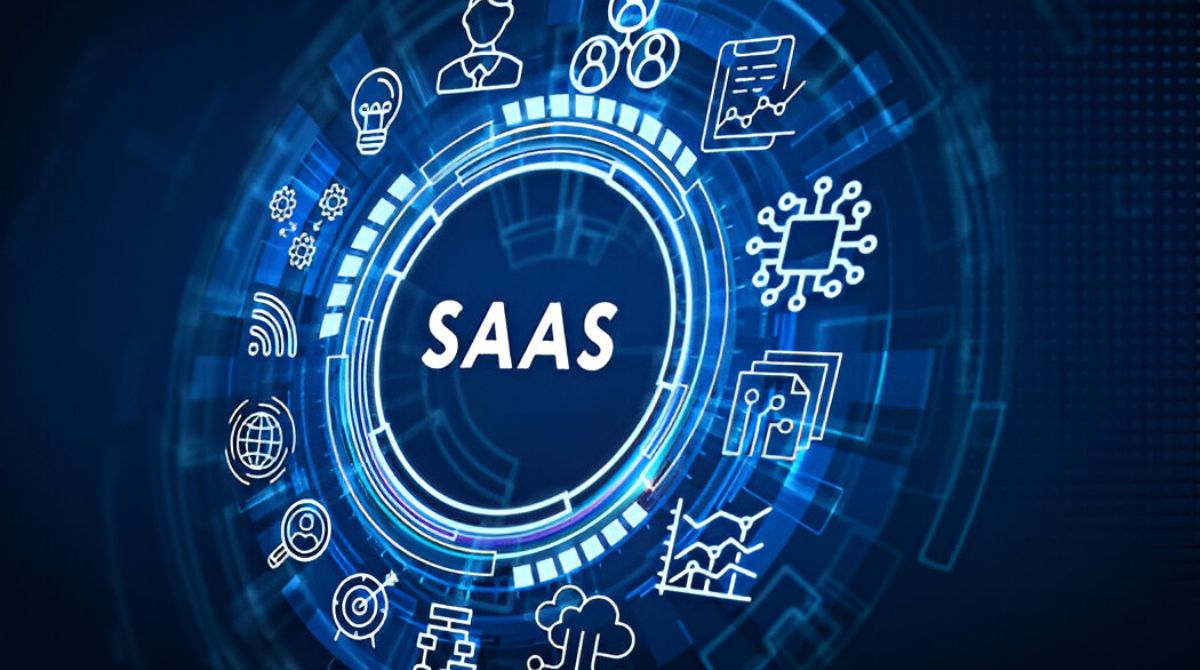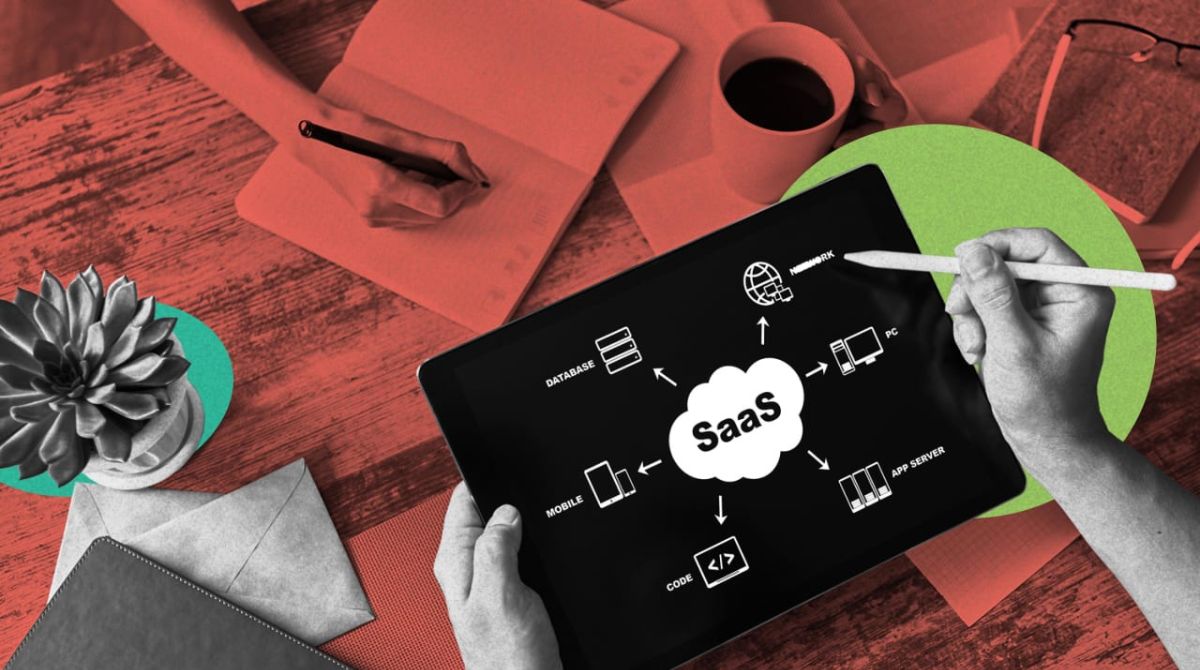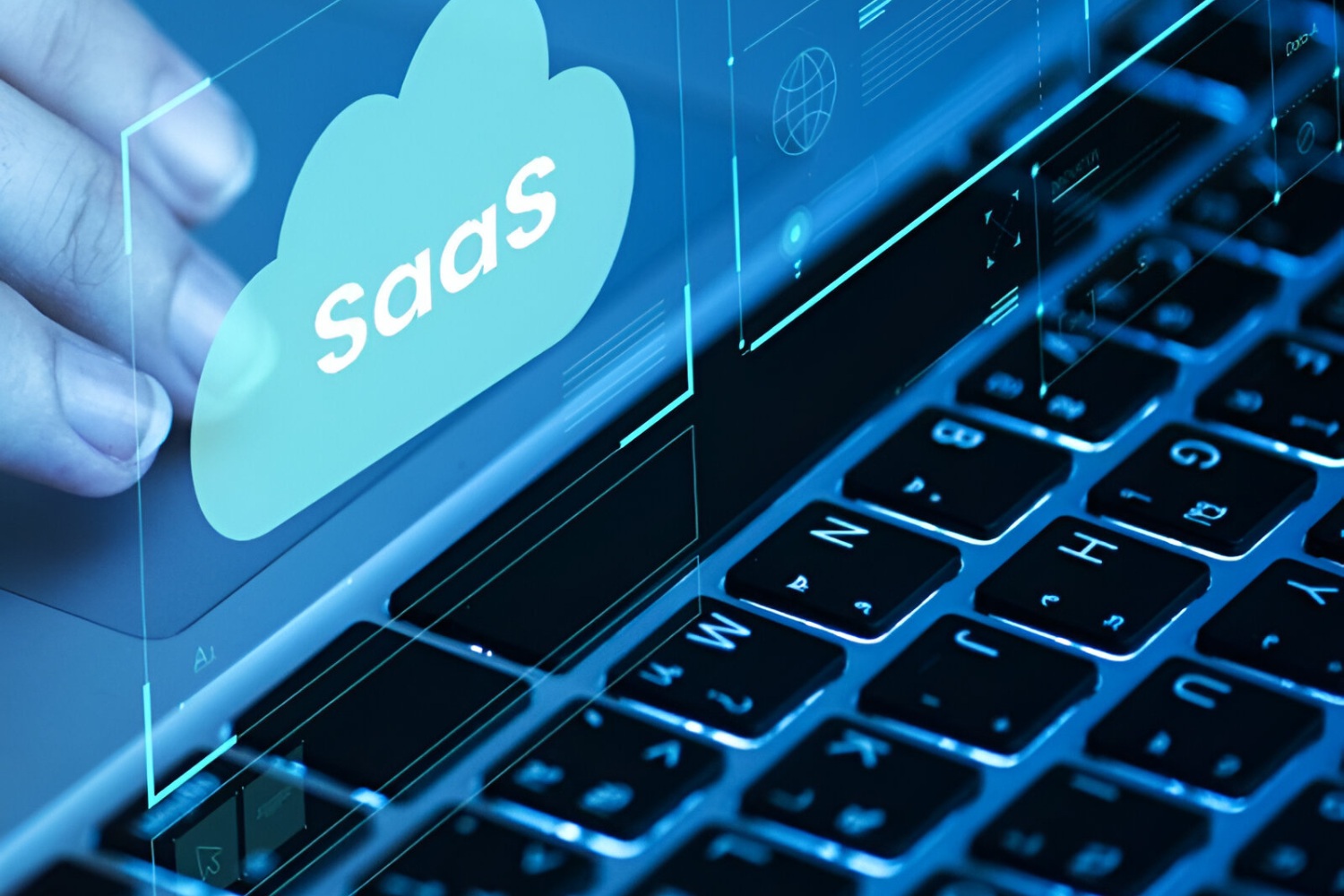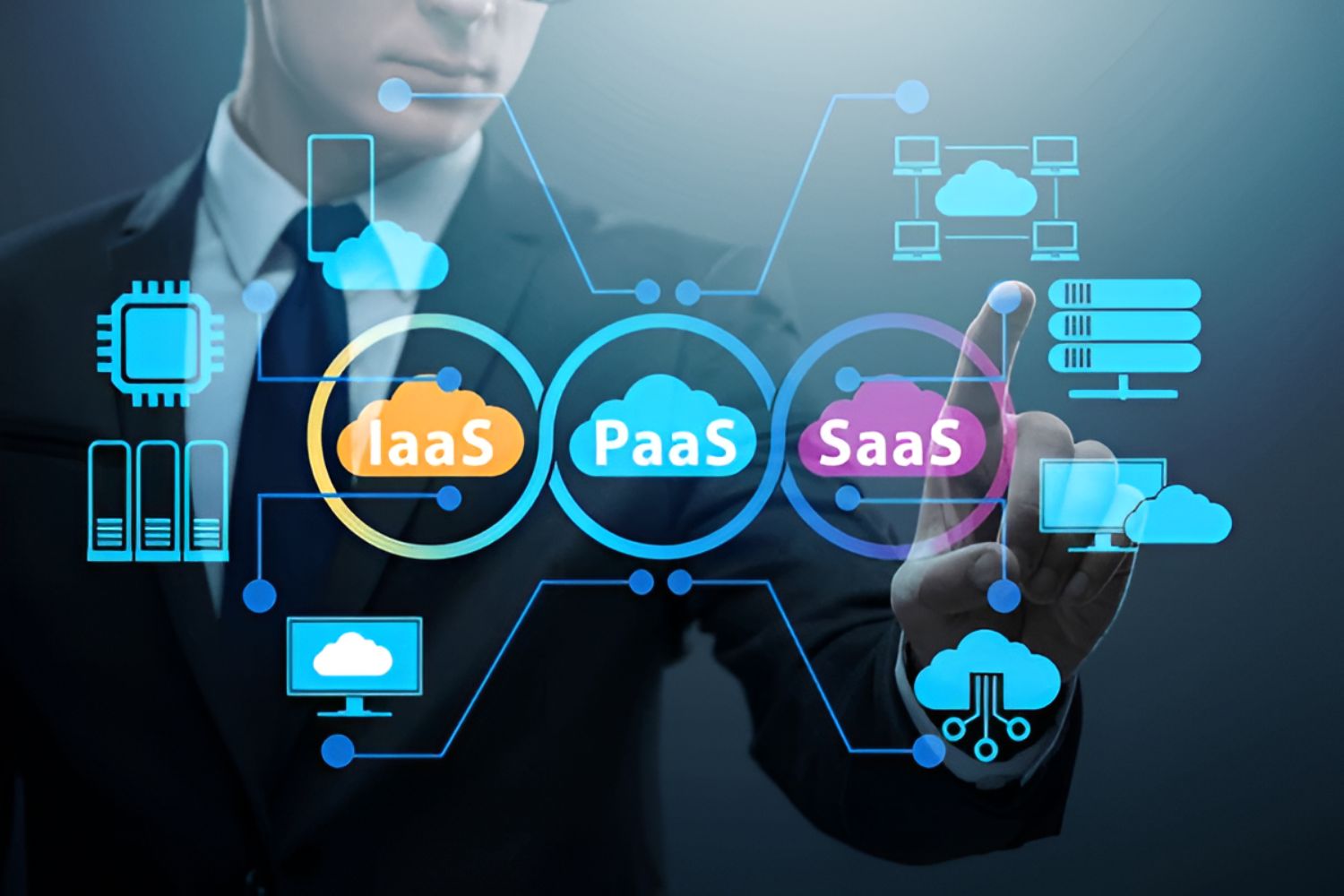Introduction
Welcome to the world of SaaS development! In today’s digital landscape, Software as a Service (SaaS) has revolutionized the way businesses and individuals access and utilize software applications. SaaS offers a cost-effective and scalable solution that eliminates the need for traditional software installation and maintenance.
SaaS, also known as cloud-based software, is hosted on remote servers and accessible via the internet. It allows users to access applications from any device and location, making it increasingly popular among businesses of all sizes. This flexible and accessible nature of SaaS has transformed the software industry and provided countless benefits to both users and developers.
In this article, we will explore what SaaS development entails, the advantages it offers, the key features to consider, the challenges developers face, and the best practices to ensure successful SaaS development projects.
Whether you are a business owner looking to streamline your operations or a developer seeking to build innovative software solutions, understanding SaaS development is crucial in today’s competitive market.
So, let’s dive into the world of SaaS and explore the exciting opportunities it brings!
What is SaaS?
Software as a Service (SaaS) is a software delivery model that allows users to access and use applications over the internet on a subscription basis. Unlike traditional software, which requires installation on individual devices, SaaS applications are centrally hosted and maintained by a service provider.
With SaaS, users can access applications from any device with an internet connection, making it highly convenient and flexible. The software is typically accessed through a web browser, eliminating the need for complex installations or updates.
One of the key advantages of SaaS is its scalability. Users can easily scale up or down their software usage based on their needs, without having to worry about infrastructure or hardware requirements. This scalability makes SaaS particularly appealing to small and medium-sized businesses that have limited resources.
SaaS applications are typically offered on a subscription-based pricing model, where users pay a recurring fee for access to the software. This pay-as-you-go model offers cost savings in comparison to purchasing and maintaining individual software licenses. Additionally, SaaS providers handle software updates, security patches, and infrastructure maintenance, freeing up time and resources for users and enabling them to focus on their core business operations.
Furthermore, SaaS is known for its multi-tenancy architecture, where a single instance of the software serves multiple users or organizations. This efficient utilization of resources allows providers to offer their services at a lower cost to customers, while still delivering high performance and reliability.
Overall, SaaS offers a highly accessible and cost-effective solution for businesses and individuals in need of reliable software applications. Its cloud-based nature, subscription-based pricing, scalability, and ease of use have made it a popular choice in various industries and sectors.
The Benefits of SaaS Development
SaaS development brings numerous benefits to both businesses and software developers. Let’s explore some of the key advantages:
- Cost Savings: SaaS development eliminates the need for upfront investments in hardware, infrastructure, and software licenses. Users can access applications on a subscription basis, significantly reducing costs and allowing businesses to allocate resources more efficiently.
- Scalability and Flexibility: SaaS applications are designed to be highly scalable, allowing businesses to easily adjust their usage as their needs evolve. Whether it’s adding more users or expanding to new markets, SaaS can accommodate growth without disruptive upgrades or installations.
- Accessibility: With SaaS, users can access applications from any location and device with an internet connection. This accessibility enables remote work, collaboration among team members, and seamless access to critical business tools.
- Automatic Updates and Maintenance: SaaS providers take care of software updates, security patches, and infrastructure maintenance. Users can benefit from the latest features and enhancements without the hassle of manual installations or disruptions to their workflow.
- Improved Collaboration: SaaS applications often incorporate collaboration features, facilitating teamwork and communication among employees. Features such as shared document editing, real-time messaging, and project management tools enhance productivity and efficiency within organizations.
- Security and Data Protection: SaaS providers invest heavily in security measures to protect user data. They implement robust security protocols, encryption, and backups to ensure data integrity and confidentiality. This eliminates the need for businesses to manage their own security infrastructure.
- Quick Deployment: SaaS applications can be deployed rapidly, reducing the time required for implementation. Users can start using the software almost immediately after signing up, allowing businesses to be agile and responsive in meeting their software needs.
These are just a few examples of the benefits that SaaS development brings. Businesses can enjoy cost savings, scalability, accessibility, automatic updates, collaboration features, improved security, and quick deployment. These advantages make SaaS an attractive option for organizations seeking a reliable and efficient software solution.
Key Features of SaaS Development
SaaS development incorporates several key features that distinguish it from traditional software development. These features contribute to the success and popularity of SaaS applications. Let’s explore some of the essential features:
- Multi-tenancy: SaaS applications are built using a multi-tenancy architecture, allowing a single instance of the software to serve multiple users or organizations. This efficient use of resources enables cost savings and scalability while maintaining the security and performance of the application.
- Centralized Management: SaaS applications are centrally hosted and managed by the service provider. This centralization allows for seamless updates, bug fixes, and feature enhancements. Users can access the latest version of the software without the need for manual installations or disruptions to their workflow.
- Customization: SaaS applications often include configuration options or settings that allow users to tailor the software to their specific needs. This flexibility ensures that businesses can adapt the application to their unique requirements without the need for extensive custom development.
- Scalability: SaaS applications are designed to handle scalability efficiently. As businesses grow and require more resources, SaaS applications can easily accommodate increased usage, users, and data without significant performance degradation.
- Integration Capabilities: SaaS applications provide integration capabilities to interact with other software systems or services. This allows businesses to integrate their SaaS applications with existing tools, databases, or third-party services, enhancing workflow efficiency and data exchange.
- Analytics and Reporting: SaaS applications often include built-in analytics and reporting features. These features provide users with valuable insights into their data, allowing them to make informed business decisions and measure the effectiveness of their operations.
- Security and Compliance: SaaS applications prioritize security and compliance measures to protect user data and ensure regulatory adherence. Providers implement robust security protocols, data encryption, regular backups, and compliance certifications, giving users peace of mind when it comes to data protection.
- User-friendly Interface: SaaS applications emphasize user experience, with intuitive and user-friendly interfaces. This ensures ease of use and reduces the learning curve for new users, enhancing productivity and user satisfaction.
These key features contribute to the success and adoption of SaaS development. Businesses can benefit from the scalability, customization options, integration capabilities, analytics, security measures, and user-friendly interfaces offered by SaaS applications.
Challenges in SaaS Development
While SaaS development offers numerous benefits, it also comes with its own set of challenges. Let’s explore some of the common challenges faced by developers in SaaS development:
- Scalability and Performance: As SaaS applications serve multiple users or organizations, ensuring scalability and maintaining optimal performance can be a challenge. Developers must design and implement a robust architecture that can handle increased usage, data, and concurrency without compromising performance or user experience.
- Data Security: Protecting user data is of utmost importance in SaaS development. Developers need to implement strong security measures, including encryption, secure APIs, and access controls, to safeguard sensitive information and prevent unauthorized access or data breaches.
- Integration Complexity: SaaS applications often need to integrate with other systems or services to provide a seamless user experience. However, integrating various platforms, databases, or APIs can be complex and challenging. Developers need to ensure compatibility, data consistency, and smooth data flow between different components.
- Upgrades and Maintenance: SaaS applications require regular updates, bug fixes, and maintenance to provide users with the latest features and optimal performance. Coordinating and deploying these updates without disrupting the user experience can be challenging, especially for applications with a large user base.
- Data Migration: Moving data from existing systems to a SaaS application can be a complex process. Developers must ensure a seamless data migration process, preserving data integrity, and minimizing downtime or disruptions for users during the transition.
- Compliance and Regulatory Requirements: Depending on the industry or target market, SaaS applications may need to meet specific compliance and regulatory requirements, such as GDPR or HIPAA. Developers must ensure that the application adheres to these standards, including data privacy, security, and auditing capabilities.
- Vendor Lock-in: Users may become dependent on a specific SaaS provider, making it challenging to switch to another solution in the future. Developers should consider providing data export capabilities and ensuring interoperability to mitigate the risk of vendor lock-in.
- Continuous Monitoring and Support: SaaS applications require continuous monitoring to detect and address any performance issues, security vulnerabilities, or downtime. Additionally, developers need to provide efficient customer support and timely response to user inquiries or reported issues.
These challenges highlight the complexities and considerations that developers face in SaaS development. Addressing these challenges requires careful planning, effective architecture design, attention to security, seamless integration, and ongoing maintenance and support.
The SaaS Development Process
The SaaS development process involves several stages, each crucial for the successful creation and deployment of a SaaS application. Let’s explore the key stages in the SaaS development process:
- Requirements Gathering: This initial stage involves understanding the client’s needs and requirements for the SaaS application. Developers work closely with stakeholders to identify and document key features, functionalities, and user expectations.
- Architecture Design: In this stage, developers create a high-level architectural design for the SaaS application. This includes defining the system’s components, data flows, APIs, and integration points, ensuring scalability, security, and performance.
- Development: The development phase involves coding the application based on the defined requirements and architectural design. Developers leverage the chosen programming languages, frameworks, and libraries to build the core functionalities of the SaaS application.
- Testing: Thorough testing is essential to ensure the quality and reliability of the SaaS application. This includes functional testing, integration testing, performance testing, security testing, and user acceptance testing. Bugs and issues are identified, reported, and addressed during this stage.
- Deployment: Once the application has passed all the necessary tests, it is deployed to a production environment. This involves setting up the necessary infrastructure, configuring databases and servers, and ensuring smooth deployment without disruptions to the user base.
- Monitoring and Maintenance: After deployment, developers continuously monitor the performance, availability, and security of the SaaS application. They proactively address any issues, apply patches and updates, and optimize the application based on user feedback and analysis.
- Continuous Improvement: SaaS development is an iterative process, and continuous improvement is key. Developers gather feedback from users, analyze data, and identify areas for enhancement or new features. These improvements are prioritized and integrated into future releases of the SaaS application.
Effective project management, collaboration among team members, and regular communication with stakeholders are crucial throughout the SaaS development process. Following these stages ensures a well-structured and efficient development process, resulting in a high-quality, feature-rich SaaS application.
Popular SaaS Development Tools and Technologies
When it comes to developing SaaS applications, developers have a wide range of tools and technologies at their disposal. These tools and technologies enable efficient development, seamless integration, and robust functionality. Let’s explore some of the popular tools and technologies used in SaaS development:
- Programming Languages: Popular programming languages for SaaS development include JavaScript, Python, Ruby, and Java. JavaScript frameworks like React, Angular, and Vue.js are commonly used for frontend development, while backend development may utilize frameworks like Node.js, Django, Ruby on Rails, or Spring Boot.
- Cloud Platforms: Cloud platforms such as Amazon Web Services (AWS), Microsoft Azure, and Google Cloud Platform offer a range of services and tools for SaaS development. These platforms provide scalable infrastructure, storage, databases, serverless computing, and other essential resources for building and hosting SaaS applications.
- Database Management: Relational databases like MySQL, PostgreSQL, and Oracle are commonly used for storing structured data in SaaS applications. Additionally, NoSQL databases like MongoDB and Cassandra are popular choices for handling large volumes of unstructured or semi-structured data.
- API Development: APIs (Application Programming Interfaces) play a crucial role in enabling integration with other systems or services. Tools like RESTful APIs, GraphQL, and API gateways facilitate the development and management of APIs, allowing seamless data exchange between different components.
- Containerization and Orchestration: Technologies like Docker and Kubernetes are widely used for containerization and orchestration of SaaS applications. These tools provide a scalable and portable environment for deploying and managing application components, ensuring consistency across different environments and reducing deployment complexities.
- DevOps Tools: DevOps practices, including continuous integration, continuous delivery, and automated testing, are critical in SaaS development. Tools like Jenkins, GitLab, Bitbucket, and Travis CI help automate build and deployment processes, ensuring efficient collaboration and rapid releases.
- Monitoring and Analytics: Monitoring the performance, availability, and usage of SaaS applications is essential. Tools like Prometheus, Grafana, New Relic, and Google Analytics provide insights into application metrics, user behavior, and performance, helping developers optimize and enhance the application.
- Collaboration and Project Management: Tools like Jira, Trello, Asana, and Slack facilitate collaboration among development teams, enabling efficient task management, communication, and project tracking. These tools enhance teamwork and streamline the development process.
It’s important to note that the choice of tools and technologies may vary depending on project requirements, developer preferences, and the nature of the SaaS application. Combining these tools and technologies effectively can result in a robust and successful SaaS development project.
Best Practices in SaaS Development
Developing a successful SaaS application requires following best practices throughout the development process. These practices ensure the quality, scalability, security, and usability of the application. Let’s explore some of the key best practices in SaaS development:
- Scalable Architecture: Design an architecture that can scale horizontally and vertically to accommodate increased usage, data, and user load. Implement techniques like load balancing, caching, and horizontal scaling to ensure the application remains performant under varying workloads.
- Security and Data Protection: Prioritize security measures to protect user data and ensure compliance with privacy regulations. Implement secure authentication mechanisms, encryption for sensitive data, and regular security testing to identify vulnerabilities and protect against threats.
- Modular and Reusable Code: Write clean and modular code to facilitate future enhancements and maintenance. Encapsulate functionalities into reusable components or modules to improve code efficiency and reduce development time for future features.
- API-First Approach: Design and develop APIs first to enable seamless integration with other systems or services. Prioritize API stability, versioning, and documentation to ensure compatibility and ease of integration for external developers or partners.
- Automated Testing: Implement comprehensive test suites and automated testing processes to ensure the stability and reliability of the application. Integrate unit tests, integration tests, performance tests, and security tests into the development pipeline to catch issues early and maintain high-quality software.
- Continuous Deployment and Delivery: Embrace DevOps practices and automate the build, deployment, and delivery processes. Utilize continuous integration and continuous delivery (CI/CD) pipelines, version control systems, and deployment automation tools to ensure frequent and efficient releases.
- User-Centric Design: Prioritize user experience by designing an intuitive and user-friendly interface. Conduct user research and usability testing to gather feedback, make informed design decisions, and continuously improve the user experience.
- Monitoring and Analytics: Implement monitoring tools to track application performance, identify bottlenecks, and proactively address issues. Utilize analytics and user behavior tracking to gain insights into user engagement, performance trends, and feature usage, allowing data-driven decision-making.
- Continuous Improvement: Gather user feedback and analyze data to identify areas for improvement. Prioritize user-requested features, bug fixes, and performance optimizations to continuously enhance the application and meet user expectations.
- Regular Backup and Disaster Recovery: Implement robust backup and disaster recovery mechanisms to protect against data loss or system failures. Regularly back up data, implement redundancy, and have a solid disaster recovery plan in place to minimize downtime and ensure business continuity.
By following these best practices, SaaS development teams can build robust, scalable, secure, and user-friendly applications that provide value to their users and drive business success.
Conclusion
SaaS development has revolutionized the way software applications are delivered and accessed, providing businesses and individuals with cost-effective, scalable, and accessible solutions. Throughout this article, we explored the key aspects of SaaS development, including its definition, benefits, challenges, and best practices.
We learned that SaaS applications offer numerous benefits, such as cost savings, scalability, accessibility, automatic updates, improved collaboration, and enhanced security. These advantages make SaaS an attractive choice for businesses of all sizes, allowing them to focus on their core operations while leveraging efficient and reliable software solutions.
We also discussed the key features of SaaS development, such as multi-tenancy, centralized management, customization, scalability, integration capabilities, analytics, security, and user-friendly interfaces. These features contribute to the success and popularity of SaaS applications, providing users with flexibility, convenience, and a seamless user experience.
However, we must acknowledge the challenges faced by developers in SaaS development, including scalability and performance management, data security, integration complexity, upgrades and maintenance, data migration, compliance requirements, vendor lock-in, and continuous monitoring and support. These challenges require careful consideration and effective implementation strategies to ensure successful SaaS development projects.
By following best practices in SaaS development, including scalable architecture design, security measures, modular and reusable code, API-first approach, automated testing, continuous deployment, user-centric design, monitoring and analytics, and continuous improvement, development teams can overcome challenges and build high-quality SaaS applications that deliver enhanced value and user satisfaction.
In conclusion, SaaS development has transformed the software industry, offering businesses and individuals a flexible, cost-effective, and efficient way to access and utilize software applications. With the right tools, technologies, and practices, SaaS development teams can create innovative and successful applications that meet the evolving needs of modern users.

























